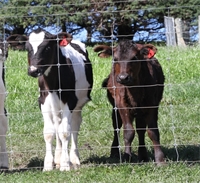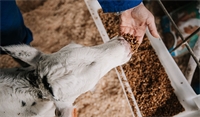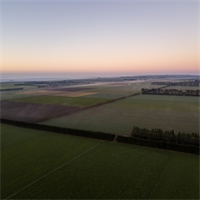04Sep
Agronomy update Spring 2024
This year the winter period has been a lot colder, and we have seen a lot more frosts compared to the last few years. It also has been a lot drier, which has impacted on the growth of both grass and arable crops. With the recent rain and snow on the ground up country it looks like the colder weather will be with us for a while longer so we will see an impact on early spring growth. Before the latest rain the ground conditions were great for crop preparation, but this rain will put this back. With the continuing colder conditions, the establishment of pasture and crops will be affected leading to poor strikes as well as multiple weed strikes.
Cereals
Autumn sown cereals have come through the winter very well and are looking very good. Crop establishment numbers this season has been good apart from the odd paddock with grass grub issues. Currently disease levels are low and keep an eye on the aphid flights. Check out www.aphidchat.com for what is happening with aphids in your area. Spring cereals will be starting to be planted over the next few weeks. Early indications are that the Spring Barley area will be up due to lack of other options.
Pasture management
Initial indications are that there is some pasture damage from the few heavy wet spells throughout the winter and from grass grub damage in the autumn. This will ensure some re-grassing in the spring as well as some renovation to partly damaged pastures. Protection of good pastures will be important over the next couple of months, especially when feed is required later in the spring. Most damage happens in this period as stock numbers return to pastures with wet and muddy underfoot conditions. Monitoring performance of each paddock during this period also helps identify those that are underperforming, dependent on their growing characteristics, and recovery from winter grazing damage. We are likely to see renovation of pastures also through the spring period as farmers monitor and plan out pasture renewal programmes. Once we have warmer conditions, keeping pasture cover within the optimal range of growth will help to achieve high growth rates, high utilisation, and high pasture quality.
Pasture renewal
Selecting the right cultivar for your farm remains just as important as ever. Not all varieties are the same, therefore it is important to have a good balance of pasture varieties to suit the climate, rainfall and irrigation you have on your farm. Key factors to consider when making this decision are dry matter yield, endophyte, ploidy, and heading date. See Dairy NZ Cultivar Selection www.dairynz.co.nz/feed/pasture-species/cultivar-selection/.
Competition
While the usual weed spectrum will be present this spring, it is important to remember any sort of competition affects the establishment of your crop or pasture. Removing weeds at the earliest possible stage should give your crop every possible chance to achieve its best yield potential. Monitor crops and pastures closely for emerging weeds and disease. Work closely with the person monitoring your crops and applying agrichemicals, and ensure recommendations are completed as early as possible.
Seed bed preparation
It is important to not take short cuts once underground conditions have improved. A planned spray programme to eliminate the previous crop and weeds will be just as important as leaving the paddock long enough for chemical to actively work this year. While time may be against you through this period the long-term reward of preparing and establishing a crop or pasture will outweigh a rushed job. It is important you put the time into preparing a good seed bed, which is vitally important for establishment of pastures and crops. Seedbed consolidation helps conserve moisture and allows a seed drill to achieve the correct sowing depth.
Fodder Beet
Variable spring conditions can affect the initial establishment and growth of Fodder Beet crops. Sowing dates are once again a hot topic of discussion, but it mainly comes down to soil temperature as sunshine hours can be variable through September and October. The drilling of Fodder Beet is generally determined by the availability of contractors and locking in a set date can sometimes be the easiest, and then build your weed spray programme dependant on spring conditions. Varietal options available in the market will be similar to previous years with addition of KWS Smart Fodder beet (Using varieties tolerant to CONVISO® ONE herbicide) being available for the first time this season. Although there is always an urgency around the availability of some varieties we have never run out in previous years, sometimes the odd variety may be in short supply however there always a similar option available. It is important you are sowing a variety that will suit your system and requirements in the winter. Yield can be determined by the growing season and as has happened in the past, a cooler than normal spring meant it is harder to get crops established and keep the weed competition at bay.
For all options, please talk to your Ruralco representative.
Related

While monoculture crops have become the norm, this wasn’t always the case.
Read More

Fall into autumn with this delicious Baked Brie recipe. The perfect accompaniment to any gathering o...
Read More

Congratulations to all the winners at the 2022 Ruralco Supplier Awards
Read More

Calving will now be underway on most dairy farms, and there may well be some early lambs around on l...
Read More

South Island dairy farmers have the perfect tool at their disposal this calving season to set their ...
Read More

New Zealand’s primary sector prospects enjoyed an upbeat march for the first half of the farming ye...
Read More